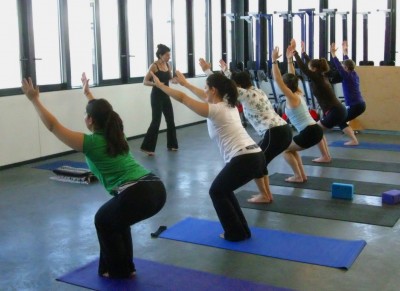
I’ve been reviewing the chapters in my soon to be released self-published book, “Stretched: Grow Your Yoga Business, Build Your Teaching Techniques,” for the past few weeks. I want to give you an idea of what’s covered in the book before it’s released. We’re up to Chapter 13, “Managing Challenges in the Classroom.” This is one of my favorite subjects because it starts to get into your ability to be a leader as well as a facilitator. Why? Because regardless of what happens in the class itself, you need to think of the bigger picture and keep it moving forward. That means you need to keep it moving forward regardless of how you feel, how one person may feel, what happens or what someone might say or do.
What kind of challenges are we talking about here? I included a number of scenarios that have happened to me ( some, more than once) and I present an approach for dealing with each. As with most of these situations, there is no”right” way to deal with each one but it’s helpful to start to talk through how you might deal with these scenarios. Some  involve requests from students to cater to their needs specifically, either before or during class, managing sequencing when you have beginners and more advanced students in the same class as well as students doing their own practice in the middle of your class or better yet, in the front row with a line of new students right behind them. These kinds of things can rattle even the most experienced teacher and they are the kinds of things that often don’t get discussed in teacher training.
One of the reasons most of the challenges I present can be so difficult to manage is that they touch on a common feeling many teachers can relate to: that feeling that when we’re teaching, we want everyone to enjoy the class and LIKE us. It might sound silly and you might not be the “people-pleasing” type but it’s natural when you teach yoga to want everyone to enjoy it, have a good time and tell their friends about the class in a positive way. We don’t want people to think that our class stinks, the temperature wasn’t right, we couldn’t do the poses we wanted to do, it wasn’t hard enough or any other factor. But we need to remember as teachers that first off, we won’t be the teacher for everyone. This was one of the most important things I learned from Baron Baptiste. We’re not everyone’s teacher. Students will gravitate towards us because we present yoga in a way that resonates with them and they feel a connection to us when they take our class. Any attempt to be the teacher for every student will only be met with frustration. You can only teach in a way that is consistent with who and how YOU are as a person. The second thing to keep in mind as you’re teaching is that it is a GROUP experience. It’s not about one person and their preferences. If that were the case, then each person would just come into the room and do their own thing and the teacher would have nothing to do. So, your role as teacher is to keep the class moving forward and not take things personally. You will never know what that student is thinking and EVEN IF they tell you what they’re thinking, without really knowing them as a person, you STILL shouldn’t take it personally.
While many of the challenges I present do have to do with an individual student’s reaction to class, there are others as well that have to do with just the overall experience. Again, the point is to get yourself to start thinking about these things so that as you begin to teach, you’ll be somewhat prepared.
Next Up: Chapter 14, How to Build a Class Around a Theme
